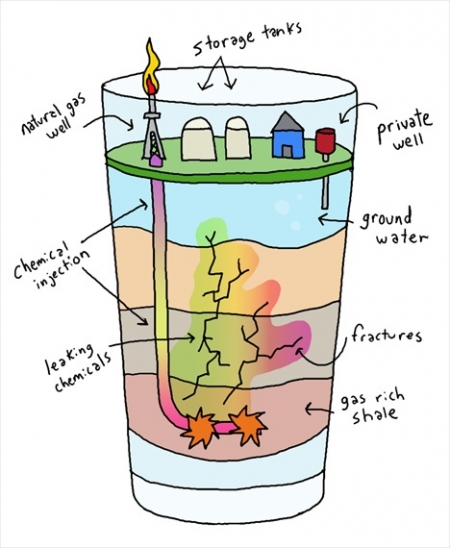The "miracle" of modern hydraulic fracturing to retrieve oil and gas deposits, know as fracking, is creating deep concern amongst Americans. Undeniably, this approach reaches large deposits of oil and shale gas by injecting pressurized water into the rock located miles beneath the planet's surface. Such fracturing makes it possible for oil and gas to reach the surface and will be gathered, refined, and distributed. Nonrenewable fuel sources can now be drawn out effectively in the nick of time to look for options when readily available supplies oil, gas or coal will expire For example, it will be a lot more manageable to access to petroleum to fuel vehicles or gas generators to prepare food and heat their homes. The market that promotes hydraulic fracturing produces countless work prospects for regional labor. As soon as the nation starts to depend on nonrenewable fuel source on a long-lasting basis, research studies concerning renewable resource sources will ultimately stop. Nevertheless, due to the brand-new innovation of fracking out oil and gas, there is no incentive to look for alternative energy sources. Nevertheless, this technique can cause contamination since it utilizes contaminants which reaches as much as a hundred times deeper compared to standard methods of drilling out oil and gas deposits. Hydraulic fracturing business are not revealing the kinds of chemicals they are utilizing to perform their technique of drawing out oil and gas from rocks. Maybe considering the advantages and disadvantages mentioned here, we must inform those who are still a bit baffled about how this brand-new innovation will impact them and their world. Our objective at Green Lives Green Living is to release the most in depth material on the web for every single subject we blog about. Ask the most hardcore of pro-fracking boosters for their opinion, and they'll explain the contemporary wonder of America's new-found energy self-reliance, a truth simply unthinkable 10 years earlier. Fracking critics in ecological and social justice circles, on the other hand, present the unforgettable image: Combustible water streaming from a kitchen faucet. The significant brand-new supply of gas produced through fracking is displacing the burning of coal, which each year adds to the death of countless individuals. To clean up our air, we need time to implement a much-needed and well thought-out shift to wind, solar, geothermal, and other sources that produce less or no damaging air-borne particulates. It is not likely that well-run drilling operations, which include drawing out oil and gas from countless feet down in the ground, are producing fractures that enable chemicals to reach reasonably shallow aquifers and surface area water products? This April, yet another significant research study, released in the Procedures of the National Academy of Sciences, verified that high-volume hydraulic fracturing methods CAN infect drinking water. Facilities, resources, and neighborhoods. Fracking operations often occur near and around inhabited locations, with effects for the regional architecture and natural surroundings. For neighborhoods, the optics, visual appeal, and lifestyle concerns are genuine, however, keep in mind that drilling operations and rigs do not go on permanently; it's not like setting up a long-term heavy production center. In locations such as Pennsylvania, Ohio, and Colorado, the drilling rigs have actually turned up near houses, decreasing the quality of life and developing a commercial feel to our neighborhoods. The Yearly Evaluations of Environment and Resources paper keeps in mind that "Between 1967 and 2000, geologists observed a consistent background rate of 21 earthquakes per year of of 3. 0 Mw or higher in the mainland United States each year. Beginning in 2001, when shale gas and other non-traditional energy sources started to grow, the rate increased progressively to [roughly] 100 such earthquakes yearly, with 188 in 2011 alone.
Hydraulic Fracturing - Green Living
Impact on Regional Labor
Advantages and Disadvantages

PRO FRACKING
CON FRACKING
CONCERN
Impact on Neighborhoods
